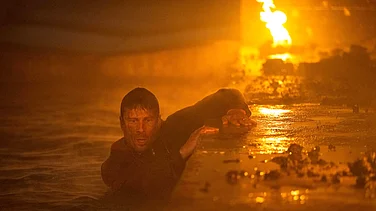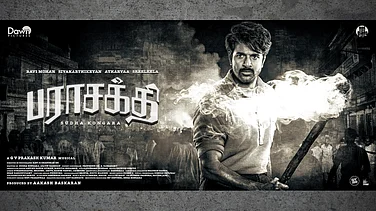Is the world ready to embrace art made by machines? The hypothesis was put to test by the 252-year-old British auction house Christie’s, during an auction held from October 23-25. Portrait of Edmond de Belamy, from La Famille de Belamy, a 70x70 cm print on canvas by the French collective Obvious, was bought by an anonymous phone bidder for $432,500, over 40 times the initial Christie’s estimate of $7,000-$10,000. If one were to imagine the origin of this image of an aristocratic gentleman, one would perhaps think of a 17th-century portrait studio. A 21st-century AI program would hardly spring to mind. Yet this image is, at least in part, a leap of the machinic imagination. What is remarkable is not only its uncanny resemblance to a past style, but the way it seems to enter the very soul of art: the eeriness of the young man’s face, his melting features, pixels fading into oblivion, signifying the effects of time and decay in metaphors of art. It affords you the fundamental experience of art too—encountering the essence of humanity in an unexpected way, inducing a strange awe.
Yet its creator is, partly, a machine. The debate surrounding artificial intelligence—its future and its impact on sundry ethical issues—is one of the most urgent of this age. With AI now beginning to extend its influence into the realm of creativity and imagination, it’s making people more nervous. Because it’s clear that we now stand to share the beautiful, human ability to create with cold, hard, mechanical intelligence.
As human beings, we have always tended to distinguish ourselves from other living beings by citing our superior intelligence. This faculty is best understood as a process, not a sum total of information gathered, but our innate capacity to blend and use information to engage with our environment in novel ways. Though often seen as distinct from more holistic and fuzzy ideas like ‘imagination’ and ‘creativity’—the terms usually used in relation to art—they all share the same turf in terms of their capacity to produce novelty. Now, what artists are recognising is that AI programs can decode complex information and engage with the environment in original ways just like humans. In fact, AI is in some ways more efficient at this because it doesn’t deal with the resistance posed by universal archetypes deeply instilled in the human imagination. What does this mean for the role of the artist? Does he stand stranded—a relic in a post-human future?

(clockwise from above) 79530 Self-Portraits by Mario Klingemann, Electric Fan by Tom White, Deep Meditations by Memo Akten
I don’t think so. I think we’ve been hasty, too keen to draw the lines separating the believers from the naysayers, in taking up arms in a debate where the question hasn’t fully taken shape. Are we really talking about the redundancy of the artist? Or something more fundamental, like the very future of our creativity and imagination?
Still considerably young, many believe AI art was officially birthed with the launch of Google’s pattern-finding software Deep Dream in 2015. In the past, its creative potential had never been given the seriousness it deserved. The images created in those initial stages didn’t hold the richness, conceptual depth and aesthetic vision of a true work of art, but seemed to be mere experiments of tech-design. However, with the sale of Belamy, there is a noticeable shift in the perception of the art market. Perhaps we are seeing the infancy of the next great art movement—no, more than a movement or style, a whole new modality itself.
AI art pioneer Mario Klingemann recently showcased his work at Nature Morte, New Delhi. He trained his algorithm by feeding it with a library of paintings by the old masters, and then exposing it to his pictures taken on a webcam. Called Self-Portraits, the piece is a distorted expression of the artist himself—half in the aesthetic vein of the old masters, but with an unmistakable modernist twist. A haunting amalgam: the artist, his complex tool with a mind of its own and a whole history of the creative process seem to have come together in the final piece of art. Interestingly, in the press release for the show, AI has been described as “a peer and collaborator in the process”, driving home the point that perhaps AI should be seen not as a threat, but rather as an accomplice, an instrument of creativity.
Klingemann, for one, charmingly brushed off any alarm about the artist being under threat. For him, algorithms are not replacing the artist, but creating in far more innovative and original ways than anything the human mind could do. What it misses and where the role of the artist truly stands is imagination—our ability to envision on the basis of our interactions with our world, usually done through the rich framework of emotions, not simply by the logical brain, but also from the ‘heart’. The AI becomes like the tin man needing the heart or imagination of the artist to truly create a work that resonates with an observer.

Portrait of Edmond de Belamy by Obvious, a French collective
In his theory of aesthetic judgement, German philosopher Immanuel Kant differentiated between beauty and the sublime thus: the appeal of beauty is immediately apparent, but the sublime often has an air of indescribable mystery. It is too great for us to grasp this unfathomable sensation, but it moves us deeply. And one undeniably is in the presence of these works. Like a parent, the artist teaches it the visual ABCs to make sense of the world around it, and to engage with it creatively. The creative process comes full circle, where ‘man’ makes the ‘machine’ that makes the art for ‘man’ to enjoy. By only feeding images, words and information into a neural network, which learns to communicate by trial and error, do we create an outsourced ‘heart’?
The question of authorship, of course, is bound to arise—even Belamy has been signed off by Algorithm or the mathematical function used to produce it, instead of by Obvious, but it’s more a tongue-in-cheek move than a comment on credit. Most artists who specialise in AI’s artistic application will say the authorship decidedly lies with the artist, just as you wouldn’t credit the camera as a photograph’s creator.
With heavyweights such as Christie’s accepting AI art, artists hope it will gain a seriousness that was previously missing. In December, Dr Elgammal of Rutgers University will be exhibiting AI art for sale at SCOPE Miami Beach, during the week of Art Basel Miami. With its constantly evolving, dynamic nature, it would be interesting to keep an eye on the momentum of the AI movement, to note how quickly we see changes in the way it is perceived. Maybe we are ready after all.


























